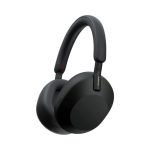There are many benefits to staying physically active, one of which is maintaining flexibility. According to one 2018 study published in The Lancet,1 the percentage of people with insufficient levels of activity remained stable from 2001 to 2016, measuring roughly 28.5% across the world. The highest prevalence of inactivity was in high-income Western countries, which measured at 42.3% using data from 358 surveys across 168 countries and including 1.9 million participants.
According to data from the CDC,2 information from 2017 through 2020 showed the overall prevalence of inactivity was 25.3% across the U.S. However, while this was the overall prevalence, the CDC then broke down the information by location, race and ethnicity. According to the January 2022 map, there were seven states in which the level of inactivity was 30% or greater, and there were no states in which inactivity was less than 15%.
When levels of inactivity are this high, it’s also likely that people’s flexibility has been negatively impacted. Sitting at a computer all day can stretch the muscles in the upper back and shorten the chest muscles, leading to hunched shoulders and upper back pain.3 This is called upper crossed syndrome (UCS).
This is just one challenge that results from shortened muscles that negatively affects joints and increases pain. Before jumping into a stretching program, let’s discover exactly what makes you flexible and then take a simple test to determine how flexible you are now.
What Is Flexibility and How Important Is It?
A bodily joint is defined as the area where two or more bones meet. While many are mobile, some are not. Different types of joints are defined by their function, movement, structure or anatomical location.4
Your body uses these joints to allow you to move. Without movement, muscles, tendons and ligaments become tight and short. This reduces your range of motion or ability to move the way you normally would. While flexibility and mobility are related, they are also different.
Mobility describes the way in which your joints move through a full range of motion while flexibility is how well your muscles can stretch or lengthen. Flexibility gives you greater mobility to do things like pick things up off the floor or grab something off a high shelf. Your body requires practice to maintain flexibility and mobility in the same way that you need to move weight to gain strength or do aerobic exercise for cardiovascular endurance.
Some studies demonstrate that stretching can reduce the severity of chronic insomnia5 and improve subjective sleep.6 It also helps reduce pain7 and has a positive impact on your mental health.8
Increasing your range of motion can also lower your risk of minor, everyday injuries as well as reduce the potential risk of performance-related injury.9 Maintaining flexibility and mobility also helps your body to work correctly and improve your posture, which in turn can reduce upper and lower back pain.
Importantly, better flexibility can help improve balance and guard against falls in the elderly10 and increases the potential to live independently as you age. One study from the University of Saskatchewan11 demonstrated that stretching for 30 minutes at each session can help reduce blood pressure, possibly even better than going for a brisk walk.
Test Your Flexibility
Theresa Larson is a physical therapist and an expert on movement health. She spoke with a reporter from The New York Times12 and shared a flexibility test that consists of five simple stretches. However, it’s important to note that as with anything else, you can have too much of a good thing.
Experts estimate that approximately 20% of the population are hypermobile or have a larger range of motion than expected, for example, the ability to touch your thumb to your inner forearm or place your hands flat on the floor without bending your knees. The trait is a result of a variation in the type of collagen the body produces.13 The following is a simple test14 that will help determine the areas of your body that may need some attention.
1. Back, hips and hamstrings — Tight muscles in these areas can cause your hips and pelvis to rotate, flattening the lower back and increasing your risk of foot, knee and back pain. Larson recommends testing these muscles with a simple toe touch. If you’re able to touch your toes while keeping your legs straight, then you likely have enough flexibility in those areas.
However, it’s important to know that people with short arms may not be able to touch their toes and people who can get their hands to the floor may be hypermobile in those joints or simply have long arms.
2. Neck — Sitting for long hours at a desk hunched over a computer can cause your neck muscles to become tight. This can trigger neck pain, shoulder pain and headaches.15 Larson recommends testing how far you can turn your head to one side while sitting in a chair. Normal range of motion should allow you to move about 90 degrees or get your chin near your shoulder.
3. Thoracic spine — Your thoracic spine is in the middle of your back. When the muscles supporting this area become tight, your lumbar spine may attempt to compensate, which in turn causes low back pain.16 Larson uses a test called the open book stretch to evaluate the flexibility of your upper and middle back.
Start by lying on your side with your legs stacked on top of each other and your knees bent. Straighten both arms in front of you with your hands together. Keeping your legs, pelvis and lower arms still, slowly move your top arm until it’s extended to the other side of your body. If you can touch your top arm to the floor behind you without your pelvis and legs moving, you have good flexibility in your thoracic spine.
4. Calves and ankles — Chronically wearing shoes with heels, overuse and a lack of stretching can lead to tight calf muscles, which affects your feet and the way you walk. Tight calf muscles can result in Achilles tendonitis, plantar fasciitis and forefoot problems.17 This simple test requires a ruler or measuring tape that you lay on the floor with the zero end against the wall.
Stand approximately 1 foot from the wall. Keep your left foot in place and move the right foot back, dropping to your right knee. Position your left foot so your front knee can touch the wall without your heel coming off the floor. If you can maintain this stance with your toes 4 inches from the wall, it indicates you have good flexibility in your calf and ankle.
5. Hips — Sitting at a desk all day can cause the external rotator muscles in your hips to tighten, which affects your lower back and legs. Test your flexibility by lying on your back with your right foot on the ground and your knee bent. Cross your left leg over your right knee with your ankle at the knee. Lift your right leg off the ground using your hands. If you can touch your hamstrings with your hands, you have adequate flexibility in your hip external rotator muscles.
Should You Stretch Before or After Exercise, or Both?
Stretching is an important part of a well-balanced fitness routine. But the question is, when exactly should you stretch? Should it be before or after your workout, or both? Most people believe that stretching before exercise helps prevent injury, but scientific evidence does not support this theory. An editorial in the British Journal of Sports Medicine18 listed some observations that refute the idea that stretching before exercise can make you less prone to injury.
Most injuries occur during eccentric contraction within a normal range of motion; therefore, increasing your range of motion before exercise is unlikely to prevent injury
Even mild stretching can cause damage at the cytoskeletal level
Stretching appears to increase pain tolerance, which could encourage injury
As noted in the paper, “It does not seem prudent to decrease one’s tolerance to pain, possibly create some damage at the cytoskeletal level and then exercise this damaged anesthetized muscle. Of note, there is no basic science evidence to suggest that stretching would decrease injuries.”
In fact, the key to injury prevention is warming up your muscles and not stretching them. By the same token, active recovery is more beneficial after a workout than simply immediately stopping and stretching.19 It’s generally accepted that a quick warm-up is advisable before you start your workout.
While stretching before working out is unlikely to provide any significant protection, it is part of a well-rounded fitness program and will improve your flexibility and mobility over time. Consider incorporating stretching into your active recovery at the end of your workout.
Because your muscles are already warmed up, be sure not to overstretch. Your body has physical limitations and when pushed too far, you can cause microtears in the muscles, tendons and ligaments20 without improving flexibility.
When stretching, I believe dynamic, functional and active isolated stretching (AIS)21 is best. AIS uses gentle pressure, as you hold each stretch for just two seconds to work with your body’s natural physiological makeup to improve circulation and increase elasticity.
I typically recommend avoiding static stretching, as it reduces blood flow in the tissue and creates localized ischemia and lactic acid buildup, which is what you want to avoid.22 I also do not recommend ballistic stretching, as the uncontrolled movement increases your risk of muscle tears.23
Address Low Back Pain With Stretches
Lower back pain is one of the most common complaints patients bring to their physicians as well as one of the most common reasons people miss days at work.24 It can range from a dull constant ache to shooting pain. It might begin suddenly or come on slowly as you age. One of the risk factors for lower back pain is tight muscles, which respond well to gentle stretching.
Your back and abdominal core muscles help support much of your body’s weight. You’ll find that low-impact activity can often help reduce pain and speed healing. While you might be tempted to loosen your lower back muscles using a standing toe touch, there are multiple reasons why this is bad for your back.
The standing toe touch stretches your hamstrings, but it also increases the burden on your lower back during the exercise. If you already have an injury, it can increase the risk for aggravation or further injury.25 Instead, consider these three gentle stretches to mobilize your lower back if you are having pain.
1. Cobra pose — This traditional beginner yoga pose is a gentle backbend position accomplished from a face-down, on-the-floor exercise.26 The goal is to strengthen the spine while opening the chest. It is also an excellent counter activity to relieve upper crossed syndrome that occurs when you are working over a desk.
Begin by lying on the floor on your stomach, stretching your legs behind you and placing the tops of your feet on the floor.27 Put your hands under your shoulders and keep your elbows close to your body. Press the tops of your feet, thighs and lower pelvis firmly into the floor while straightening your arms to lift your chest.
Go only as high as you can while maintaining connection from your lower pelvis through your toes on the floor. Start by holding this for 15 seconds, building to 30 seconds as you grow stronger. Inhale on the way up and exhale with your release on the way down.
2. Cat-cow pose — This basic yoga pose is breath-synchronized, and it warms up the spinal muscles.28 Begin with your knees and hands on the floor and your back straight in a table position. Your shoulders should be over your wrists, and your knees directly under your hips, with your weight balanced on all four evenly.
Move into a concave position as you inhale through your abdomen, tipping your belly toward the floor and lifting your eyes toward the ceiling. Exhale while drawing your belly button toward your spine and slowly move into an arched back position with your chin resting on your chest. Do not hold in the cat or cow position but move gently and smoothly through both.
3. Child pose — This pose is a resting pose used between more rigorous yoga exercises.29 Start by kneeling with your feet together while sitting on your heels. Move your knees apart so they are as wide as your hips.
Exhale while lowering your body down between your thighs. Lengthen your lower back away from your pelvis and lay your hands on the floor, palms up along your body. In the beginning, start with 30 seconds and work up to two to three minutes as you’re comfortable.





